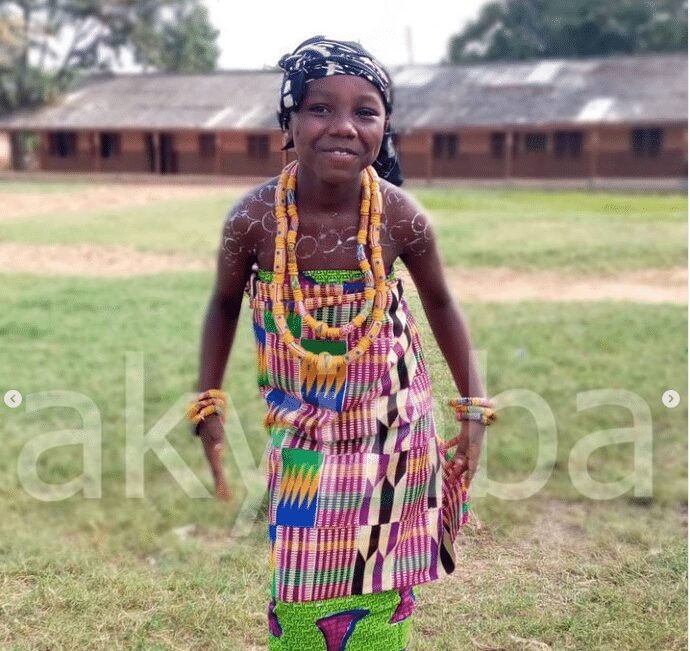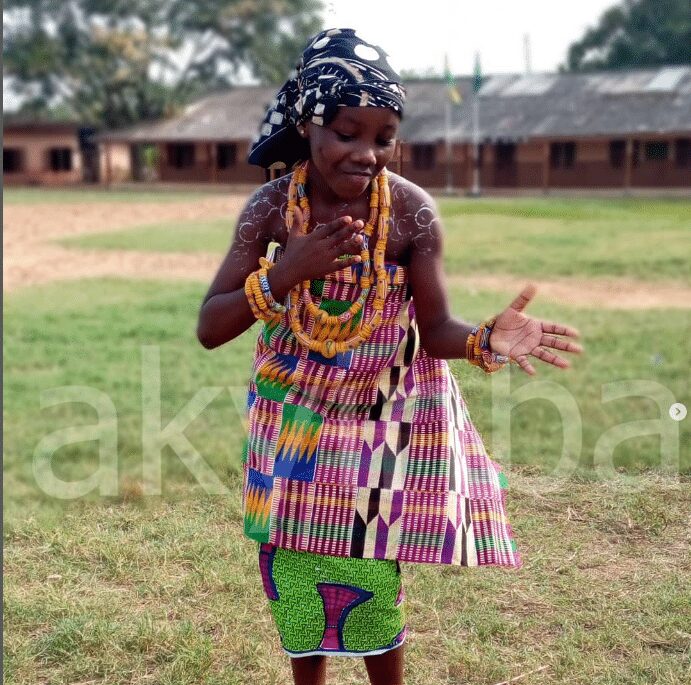Apatampa Dance is a dance performed by the Fanti people of Ghana, known for its rich cultural significance and vibrant movements. The origins of the dance can be traced back to a captivating story that has been passed down through generations.
Historically, it is believed that the name “Apatampa” originated from an incident long ago. According to the legend, a fearsome giant would often attack and kill Fanti men during the night, causing fear and turmoil among the community.
One fateful night, as the giant was engaged in a fierce battle with the last remaining man, a woman appeared on the scene. She gracefully danced with such elegance and precision that it caught the attention of everyone around. Her mesmerizing performance managed to distract the fight, bringing a temporary peace to the chaos. In the Fante language, this act of separating the fight was described as “apata ampa,” which translates to “separate the fight.” Over time, this phrase became synonymous with the dance, giving it the name “Apatampa.”

Instruments play a crucial role in the performance of the Apatampa dance, contributing to the rhythmic and melodic elements of the dance. The primary instrument is a large rectangular plywood board, on which the drummers strike the open surface with their palms. The resonant and pulsating beats created by the drummers set the pace and provide the foundation for the dancers’ movements. The drums produce deep and powerful sounds that reverberate throughout the performance space, adding a sense of energy and intensity.
Another significant instrument used in the Apatampa dance is the pitch metal whistle, locally known as “aben.” The aben adds a distinctive melodic element to the dance. Its piercing sound cuts through the drumming, creating a contrast and providing a sense of musicality to the performance. The whistle player skillfully blends their notes with the drummers’ beats, creating a harmonious and captivating musical composition.
Additionally, the Apatampa dance incorporates the use of castanets, locally known as “afrikyiwa.” Castanets are percussion instruments consisting of two small concave shells made of wood or other materials. The dancers hold the castanets in their hands and manipulate them by snapping the shells together. The rhythmic clacking sound produced by the castanets adds a layer of percussive texture to the music, enhancing the overall auditory experience of the dance.

The performance of the Apatampa dance is a sight to behold. The dancers begin by making a distinct beat by hitting both thighs with their hands twice, followed by clapping their hands on the third beat. They then proceed to beat their chests twice, creating the fourth and fifth beats. The dancers execute these rhythmic movements with a cheerful demeanor and a smile, radiating joy and enthusiasm. Their movements are characterized by foot shuffling, swaying, spinning, and other agile gestures, all performed in sync with the beats of the drums and the melodic accents of the whistle.
The Apatampa dance is not only a form of entertainment but also a cultural expression that celebrates the traditions and heritage of the Fanti people. It is often performed during special occasions, festivals, and community gatherings. The dance serves as a unifying force, bringing people together and reinforcing the sense of identity and pride among the Fanti community.
The Apatampa dance is an integral part of the Fanti culture in Ghana. Rooted in a captivating legend, the dance showcases the agility, creativity, and musicality of the Fanti people. With the drumming, pitch metal whistle, and castanets creating a vibrant musical backdrop, the dancers’ lively movements captivate the audience, preserving the cultural heritage and traditions of the Fanti people for generations to come.
Photo Credit: akyinbakollectionz





































